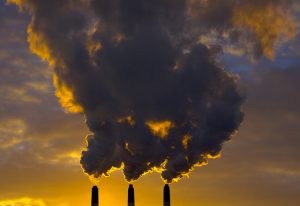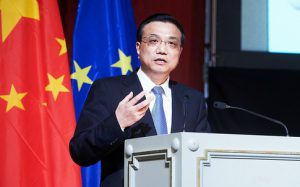China has mapped out how it will try and peak greenhouse emissions by 2030 or before, details that could have a major bearing on UN climate talks aimed at delivering a deal in Paris later this year.
The world’s largest emitter of greenhouse gases “will work hard” to peak its CO2 emissions before 2030, Premier Li Keqiang said at a summit meeting with the French government in Paris ahead of the publication of its ‘Intended Nationally Determined Contribution’ (INDC) in Beijing and submission to the UN’s climate arm.
The document said China plans to reduce the carbon intensity of its economy 60%-65% per unit of GDP by 2030, compared with 2005 levels, and reiterated a previously-announced aim that renewables should make up 20% of its primary energy supply by the same date.
The English language translation of the 20-page document said: “A one-thousand-mile journey starts from the first step”.
It added that to reach its 2030 goals, China would need to build on actions already taken by introducing new, toughly-enforced laws and penalties and hasten sweeping changes to how it produces and consumes energy, goods and raw materials.
Analysts pointed out that the 60%-65% goal on cutting carbon intensity represented a major increase from previous commitments, but the rate at which emissions still rise, peak and then fall would be largely dependent on what happens to GDP in China.
“It will be interesting to see if China clarifies this further,” said Mark Kenber of the Climate Group.
Other analysts said the 60%-65% carbon intensity target reflected the advances already made by China to decarbonise its economy.
In it, China highlights an unprecedented roll-out of renewable energy and energy efficiency measures, shutdowns of coal-fired power plants and energy-guzzling factories, and a switch to cleaner-burning gas.
China has already achieved a 33.8% cut in carbon intensity on 2005 levels but details of the climate plan released today provide few clues on how fast emissions will fall after an emissions peak.
Even though much of China’s climate plan is made up of previously-announced policies related to energy use, it means the world’s three highest emitting economies – China, US, and the EU – have published the climate action targets they are prepared to commit to under a new agreement reached in Paris.
Priorities
But the document said little on the pathway for emissions cuts after 2030 and whether the country can, or will, drive down its emissions at a rate that would help the world avoid runaway climate change. China has so far rejected proposals by the EU to review emissions cuts every five years.
Commentators have also pointed out that China’s action on climate change is driven by genuine self-interest and is part of the government’s reform agenda, outlined in the Five-Year Plan, to restructure the Chinese economy, and address concerns about air pollution, energy security, and the adverse impacts of climate change.
Based on the 20% non-fossil fuel commitment in the INDC, China will have to build an additional 800-1,000 GW of zero-emission generation capacity by 2030 – about the same as the country’s current coal-fired capacity and nearly as much as the total current installed capacity in the US energy sector.
Costs
Meeting climate reduction goals in the INDC will cost China over US$6.6 trillion (41 trillion yuan), the country’s lead negotiator at UN climate talks said last week at a meeting with US counterparts.
This would involve heavy costs for energy-intensive industries, but could also provide huge economic benefits to sectors such as renewables, energy efficient equipment, environmental technologies, low-carbon vehicles and power grid infrastructure.
Following the publication of the INDC, other large emitters such as the US and the EU are likely to crank up the pressure on China to set up a robust rules-based system through common international accounting rules and reporting requirements, something that the central government in Beijing has rejected so far.








